
When choosing your 3D program, should you go with Blender or Cinema 4D?
Blender and Cinema 4D are pretty tough competitors and have two very different target audiences when it comes to features in accessibility to these 3D programs. So how do you know which one you should be using and what are the big ticket features you need to know about each, such as rendering, modeling, community, and a lot more!
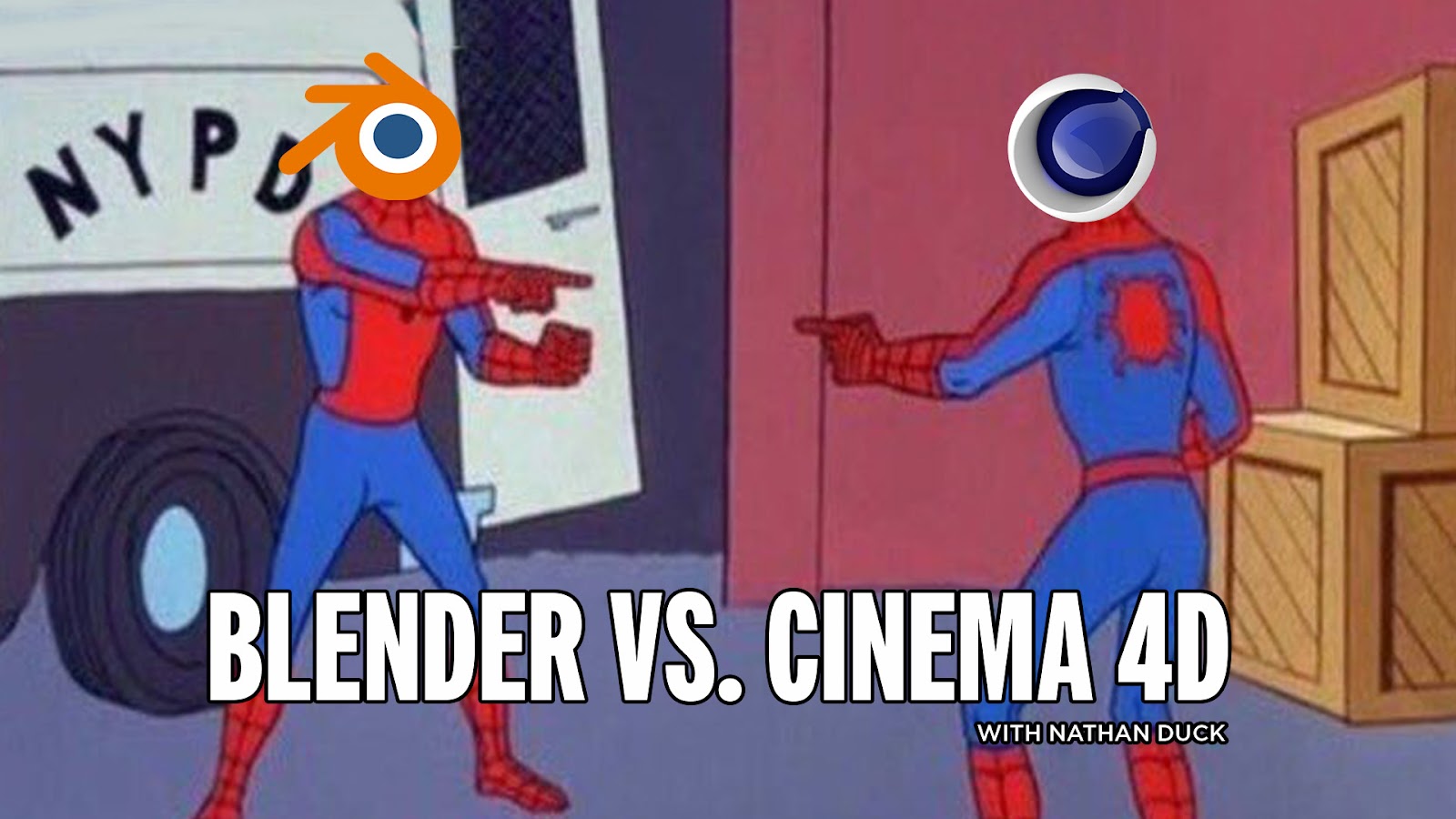
I should probably introduce myself as I am a biased source of information. My name is Nathan Duck, and I make a living creating training videos and courses using Blender. I’ve been using Blender professionally for about six years. My first 3D program was Cinema 4D, and I used it for a few months until I realized I needed to render on my GPU. I couldn’t afford Octane back then and heard Greyscalegorilla mention Blender is free and comes with a GPU render engine.
As for this article, I will do my absolute best to not be biased. Humans are tribal, and I know this is a very hotly contested topic. I personally do not mind where anyone falls on this issue. Both programs create incredible art and everyone who uses these programs are great people. I’ve collaborated with artists using Cinema and you won’t find me arguing about this subject. At the end of the day, it’s just a tool in your tool belt and one program is going to suit needs that another program cannot. So this means I will be talking about this from the perspective of a Blender user.
I started using Blender for financial reasons and I continue to use it because it’s what I know and I’m very comfortable with it. But if one day I was forced to learn C4D, I would not be complaining.
How do you start learning 3D programs?

Blender is definitely harder to learn than Cinema 4D. If you are a more technically minded person, you may find yourself having a lot of fun with the node system and playing around with scripting in Blender. Cinema 4D is very well known for being pretty easy for beginners to pick up. I remember my first few tutorials and how easy it was to make something really cool with just one video. That is what inspired the way I teach Blender today.
User Interface
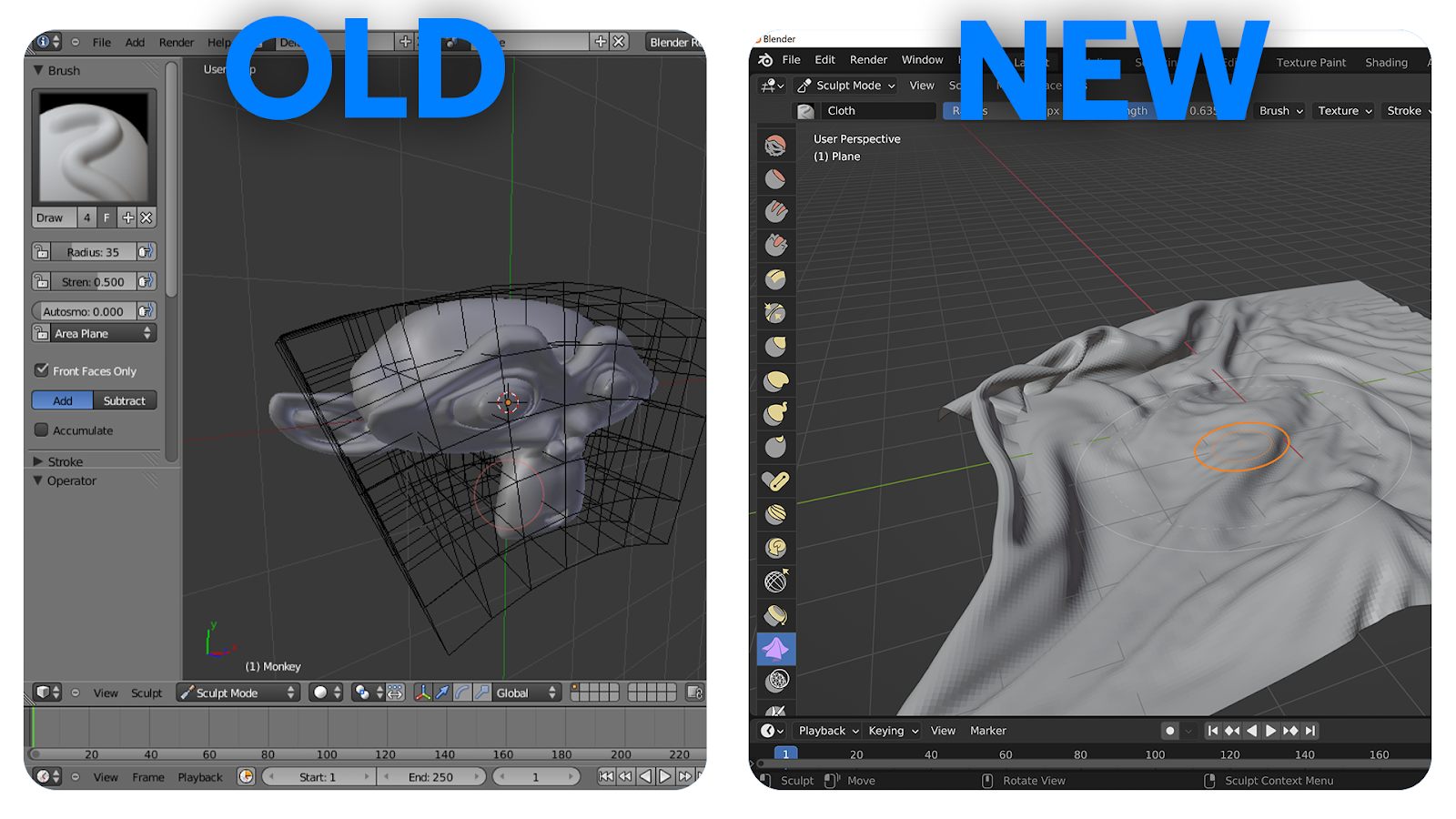
In recent years, Blender has drastically improved the user interface. It went from being this clunky mess to a very well oiled machine that does a really good job of keeping your viewport from getting overly cluttered. It can definitely improve, but 3D programs have to juggle 1000 things
I would say Cinema 4D lacks in this area. Windows can take up more space than I think that they should, but you can find a good workflow with that. Overall I think Blender has a user interface that is much more approachable for a beginner, and Cinema 4D has one relatively streamlined for someone with a specific workflow.
Community For Plug-ins

The community for plug-ins in Blender is almost never ending. Because Blender is open source, people can just go in with an idea, turn that into a product, and sell it. More often than not, those plug-ins are free. On top of that, the paid plug-ins are generally more cost effective compared to Cinema 4D. If I'm being honest, I would prefer higher prices for some of these solo Blender add-on developers so that they can make a full-time living and continue making even better tools. Regardless of my opinion, if you like really cool fun plug-ins the Blender community will not disappoint .
While Cinema 4D plug-ins can be expensive, they are very very impressive and there are a lot of really cool developers out there. Both communities will not disappoint you on plug-ins but the Blender community will keep some money in your bank account.
Motion Graphics
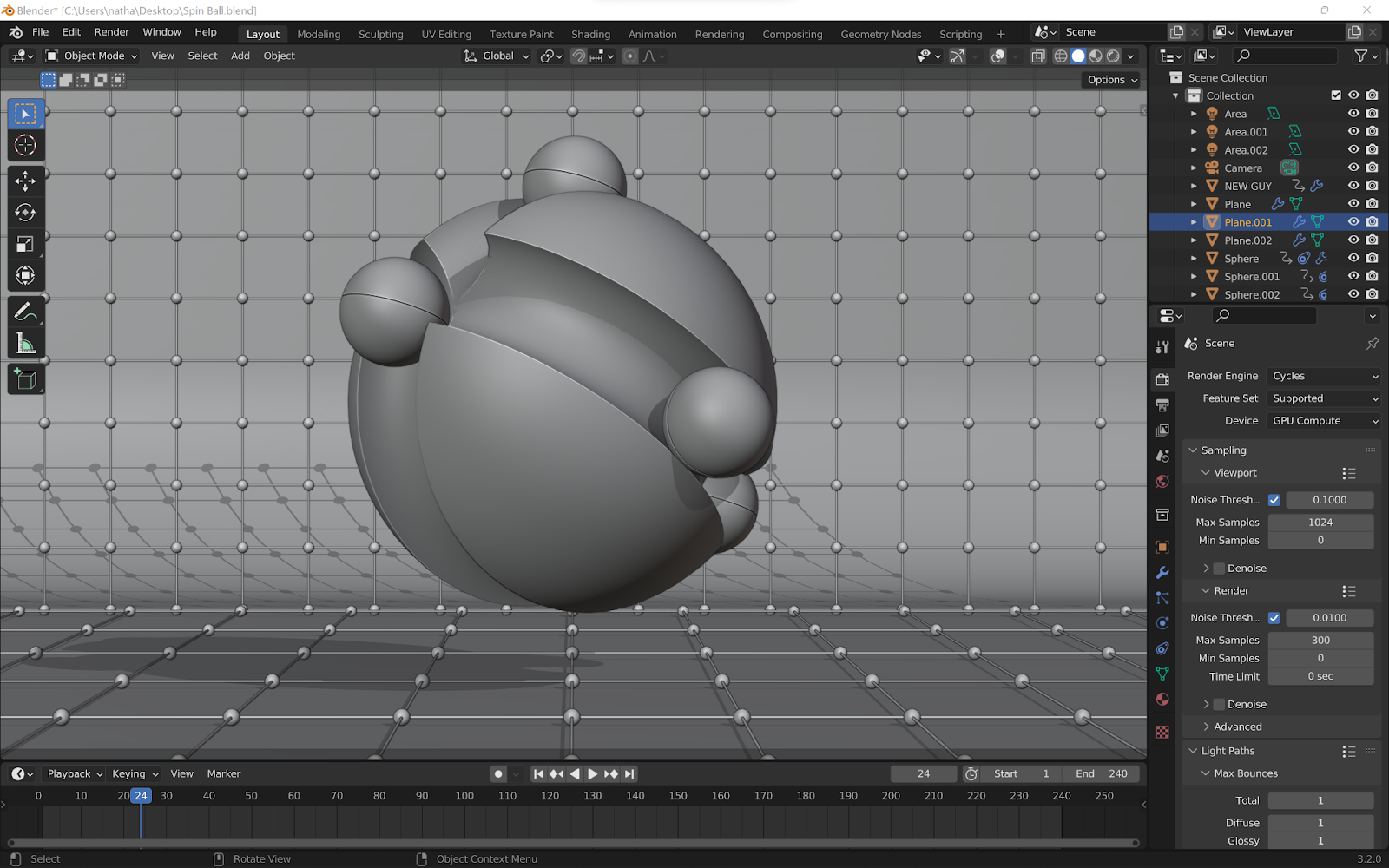
Cinema 4D is king when it comes to motion graphics. I can say flat out, if your goal is to make industry standard motion graphics, you are going to want to use Cinema 4D. The cinema MoGraph System is simply superior. Blender can do most of what Cinema 4D can, it will just take you longer to pull off.
There is definitely a bright future for Blender with the “everything nodes” project currently taking place at The Blender Institute. The project‘s goal is to move as many things to a node based system as possible. They have currently implemented the geometry nodes system, making a procedural modeling workflow which caters itself to some really fun procedural animation, slightly mirroring some Houdini stuff. As that project continues, the gap between Cinema 4D and Blender will close.
Modeling
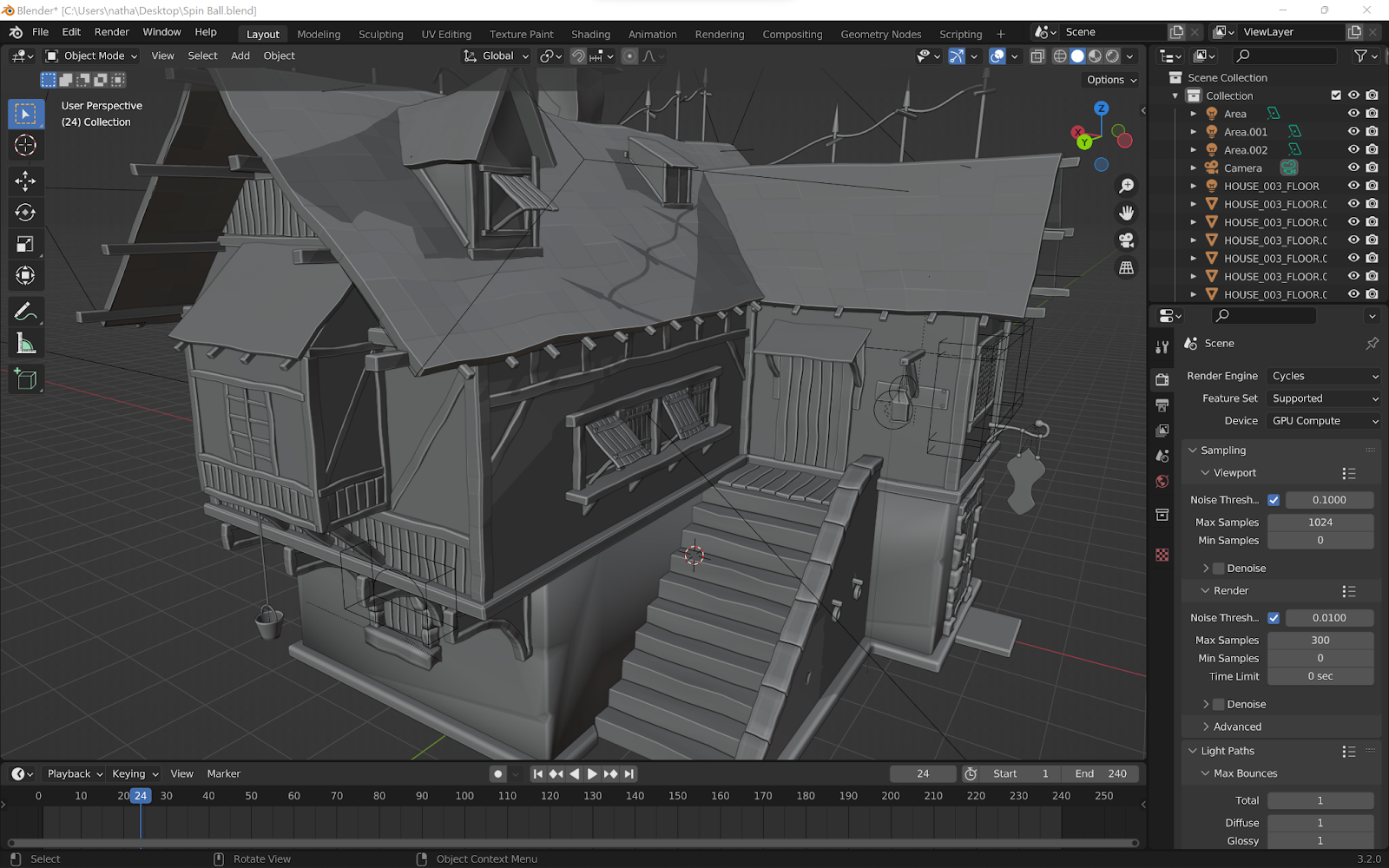
Modeling in Blender is very straightforward and pretty easy to get your mind around. The latest updates have created some pretty simplified controls for geometry manipulation and poly modeling. At this point, creating things such as hard surface robots and home interiors is a very clean, intuitive process. And if you add in some of the very popular plug-ins, it will make it even easier.
On the other hand Cinema 4D still wins with their parametric modeling system and the very interesting volume modeling. However, I would say in terms of simple poly modeling they’re just about the same.
Texturing
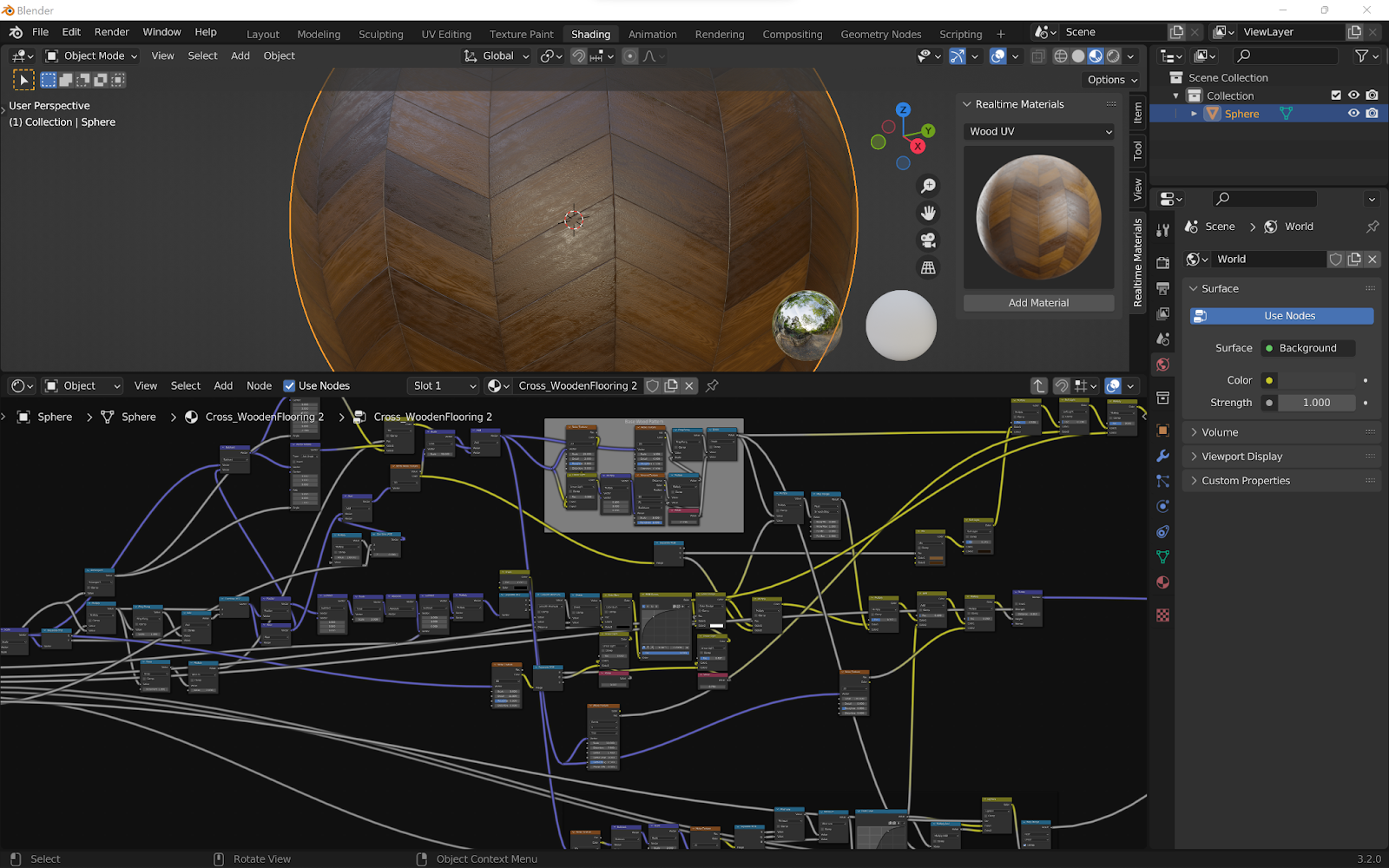
Texturing in Blender is a completely node-based system. It can feel confusing and convoluted at first, but once you wrap your mind around it you’ll find how versatile it is.
Cinema 4D has a more intuitive texturing process. It feels much more approachable and you still have access to a node based system if you would like to use it. Cinema 4D does a good job of automating some of the node workflow for you. If you’re someone who loves to get into the nitty-gritty and know everything that’s going on, the Blender node system is going to be perfect for you. If you were technically minded but still want things to feel a little more automated, definitely go for Cinema 4D
System requirements for 3D Programs
Cinema 4D
- Operating system: Windows 10 64-bit or higher; MacOS 10.14.6 or higher (Intel-based or M1-powered); Linux CentOS 7 64-bit or Ubuntu 18.04 LTS
- RAM: 8 GB minimum and 16 GB recommended for Windows; 4 GB minimum and 8 GB recommended for MacOS
- Graphics card: High-performance graphics card such as AMD GCN 4, Radeon RX 400 card, NVIDIA GeForce 900 series card, or higher for Windows; GPUFamily1 v3 or higher for MacOS is recommended
Blender
- Operating system: 64-bit Windows 8.1 or newer; MacOS 10.13 Intel or newer, 11.0 Apple Silicon; Linux
- RAM: 4 GB minimum, 16 GB recommended
- Graphics card: 1 GB minimum, 4 GB recommended
Render Engines
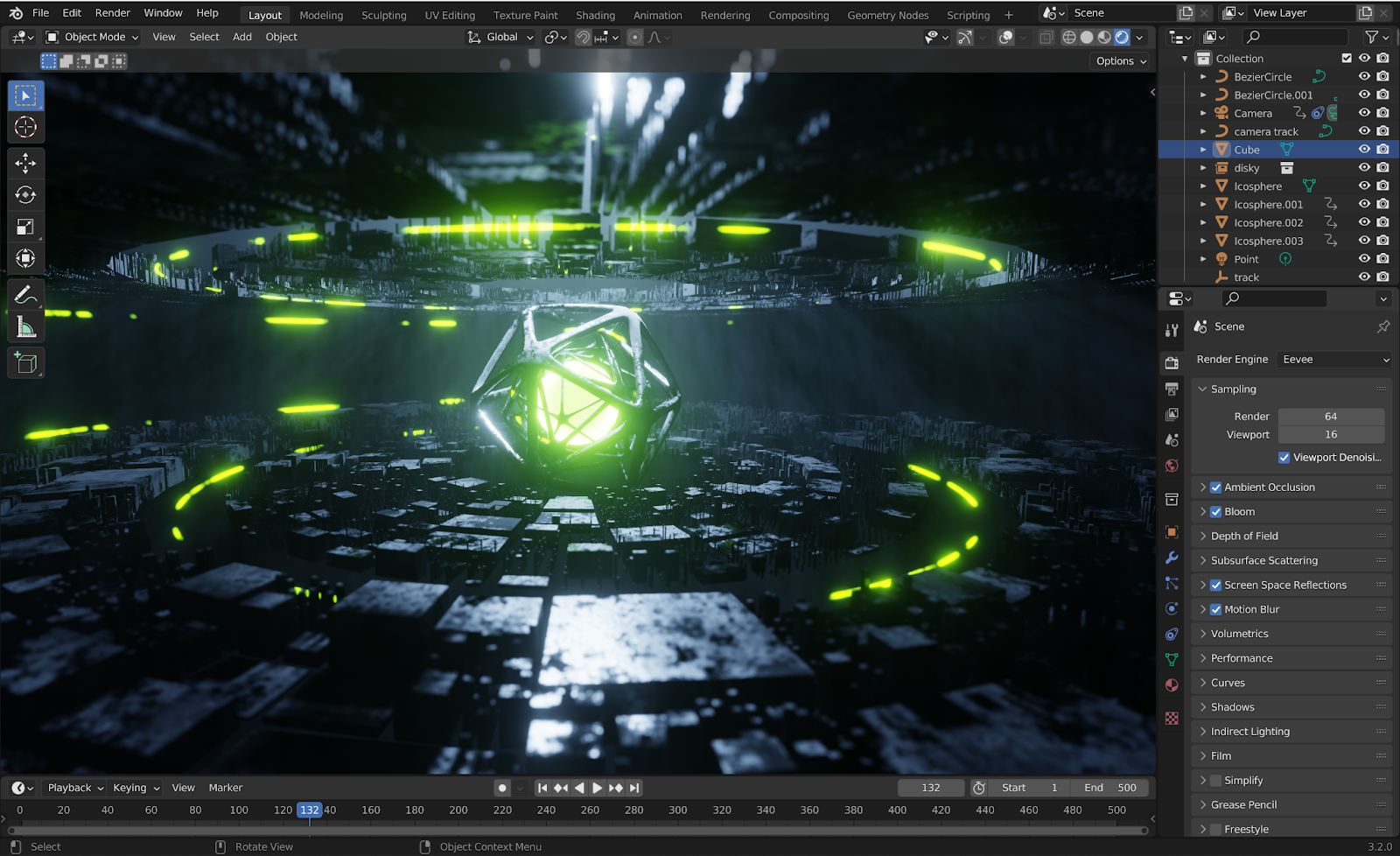
One thing I absolutely love about Blender is the native render engines. Cycles is the physically-based render engine allowing you to render on the GPU and the CPU at the same time. In the most recent update, they almost cut render time in half. It’s incredibly fast and can give you near perfect photo-real images at absolutely no extra cost.
I personally have fun with their real-time engine named Eevee. It can output some incredibly high-quality images and I enjoy using it for motion graphics that have no need to be photorealistic in the first place. A lot of the concert visual loops I’ve created were done completely real-time and look amazing.
Cinema 4D’s native Standard & Physical render engine is sadly no longer being developed (to my knowledge). They did just add in a CPU version of Redshift that is now included in C4D, but CPU rendering is very slow at this point. But if you have the cash, Redshift GPU and Octane create some of the best images in 3D that I’ve seen. If you get jealous when you see a gorgeous Octane render, know that you're not alone.
Rigging
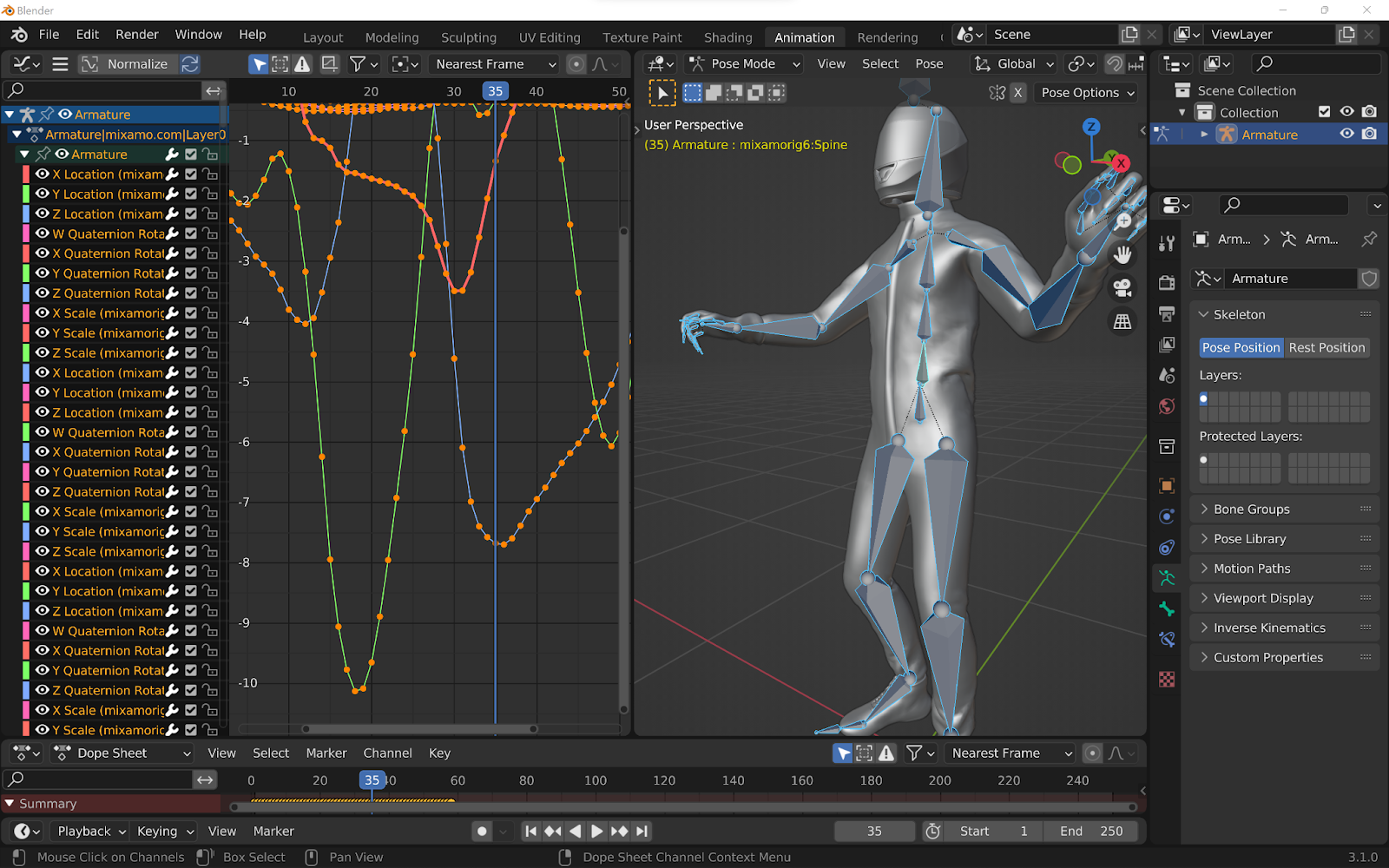
You will not be disappointed with Blenders rigging system. If you’re someone who wants to create characters, you'll delight in the near limitless control with Blender's rigging scheme. I would say it’s pretty industry standard. However, for now, Cinema 4D is just a bit better with features such as automating weight painting and other things like that.
Where can you learn how to use these 3D programs?
Both programs have a very sprawling tutorial community on YouTube. But I have to say for my own experience blender definitely has far more content and a more active community. Both communities are incredibly active and are full of incredible artists and people who love to learn the program. But I personally had a better time learning Blender on YouTube then when I was learning Cinema 4D on YouTube. And there is a plethora of professional paid courses, on the Blender side they are generally going to be much less expensive than Cinema 4D courses.
Conclusion
So after all of this information, how do you decide which one is for you?
Most people will choose based on their current financial situation. Blender is free and it certainly will not limit you with the type of work you want to create. At times it may be more difficult than Cinema 4D, but there are dozens of movies and shows that use Blender in their pipeline. If you have the cash, I would say Cinema 4D currently is a better product!
Cinema does a much better job at making difficult tasks easier to do...especially When it comes to motion graphics and other tasks that need to be automated. However, with a dedicated development team and a robust community, it won't be long before Blender comes even with Cinema 4D.













